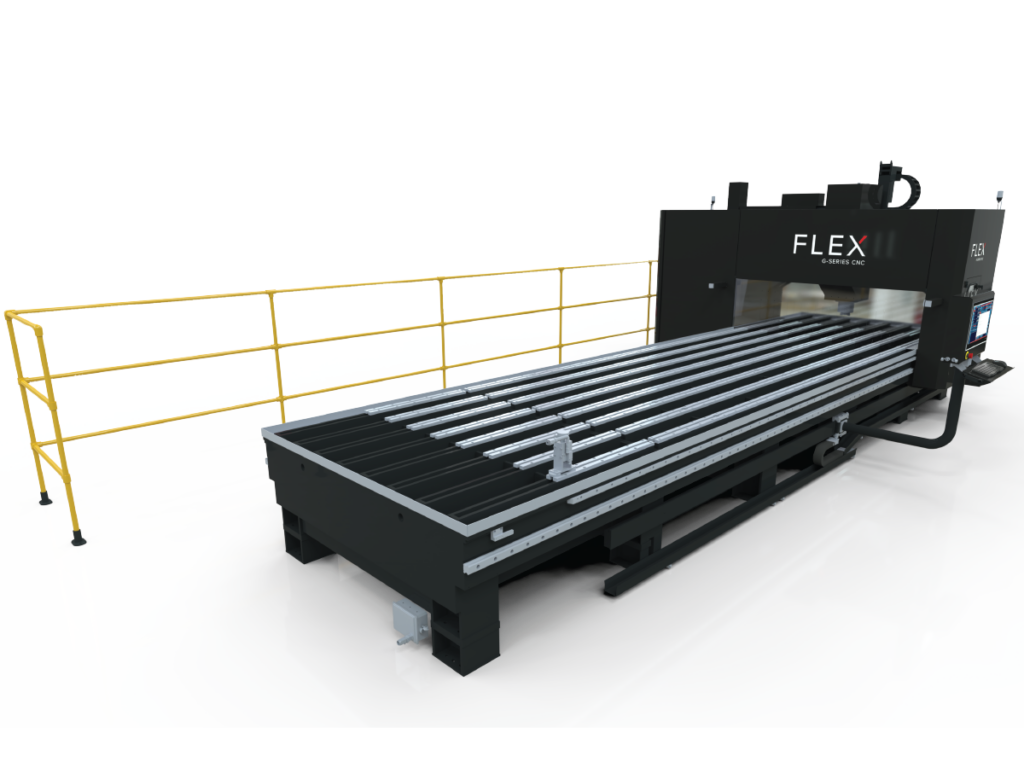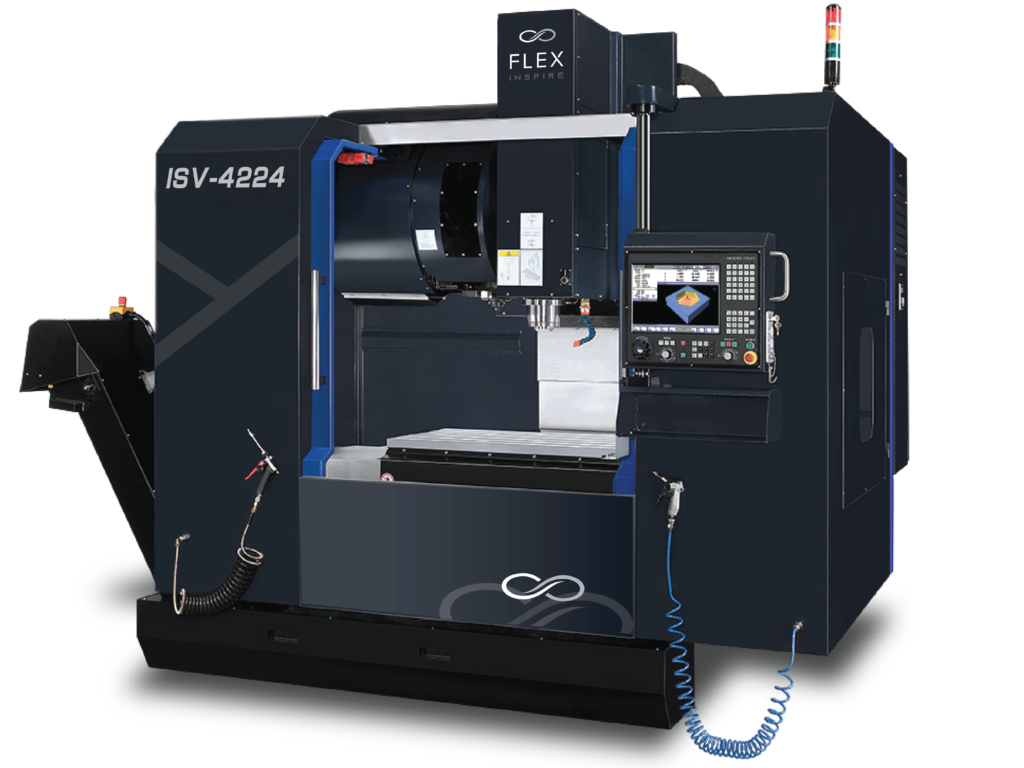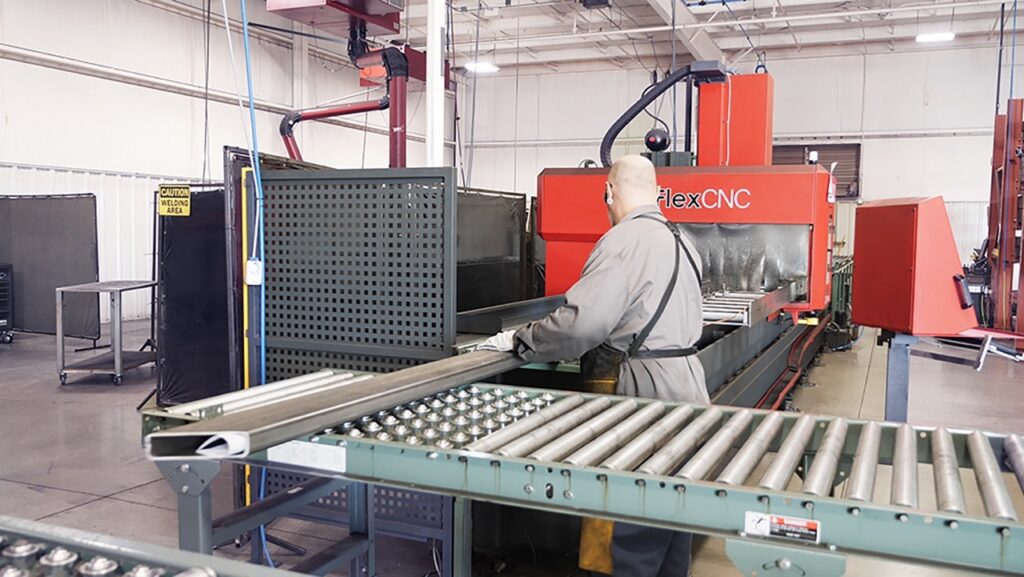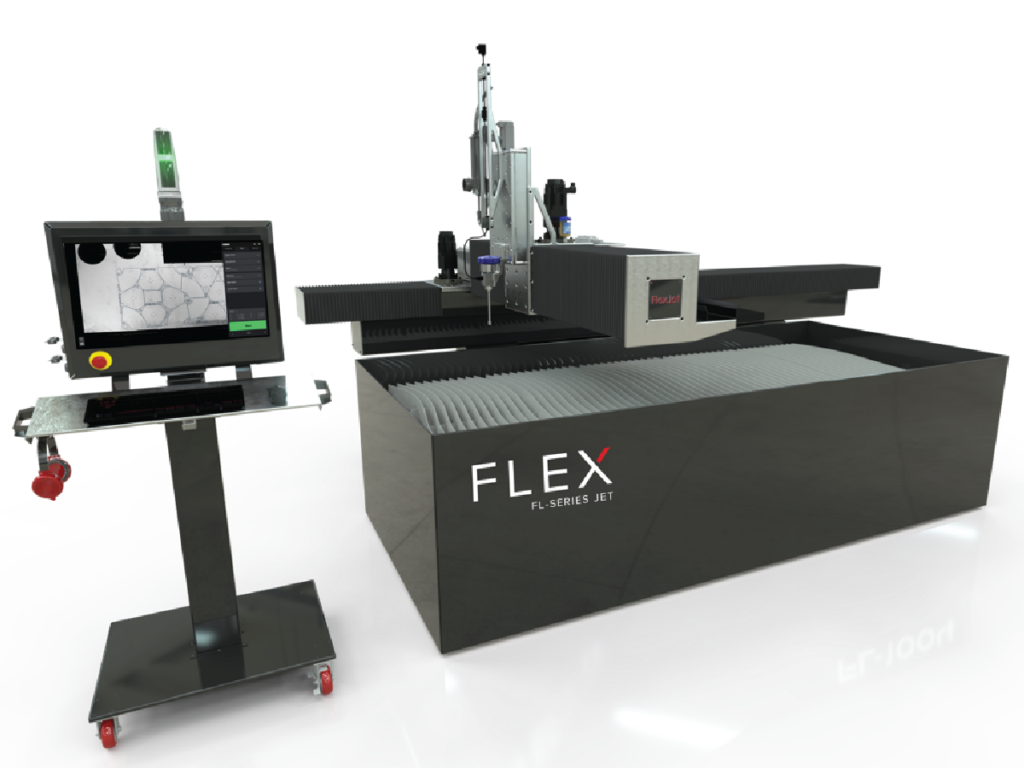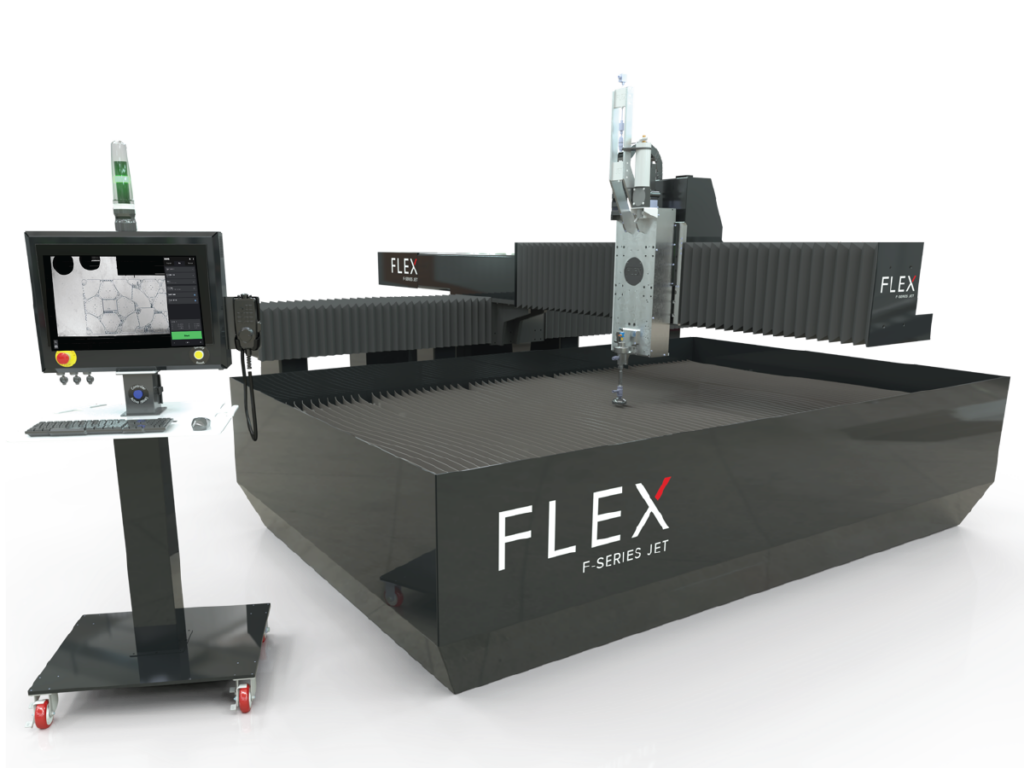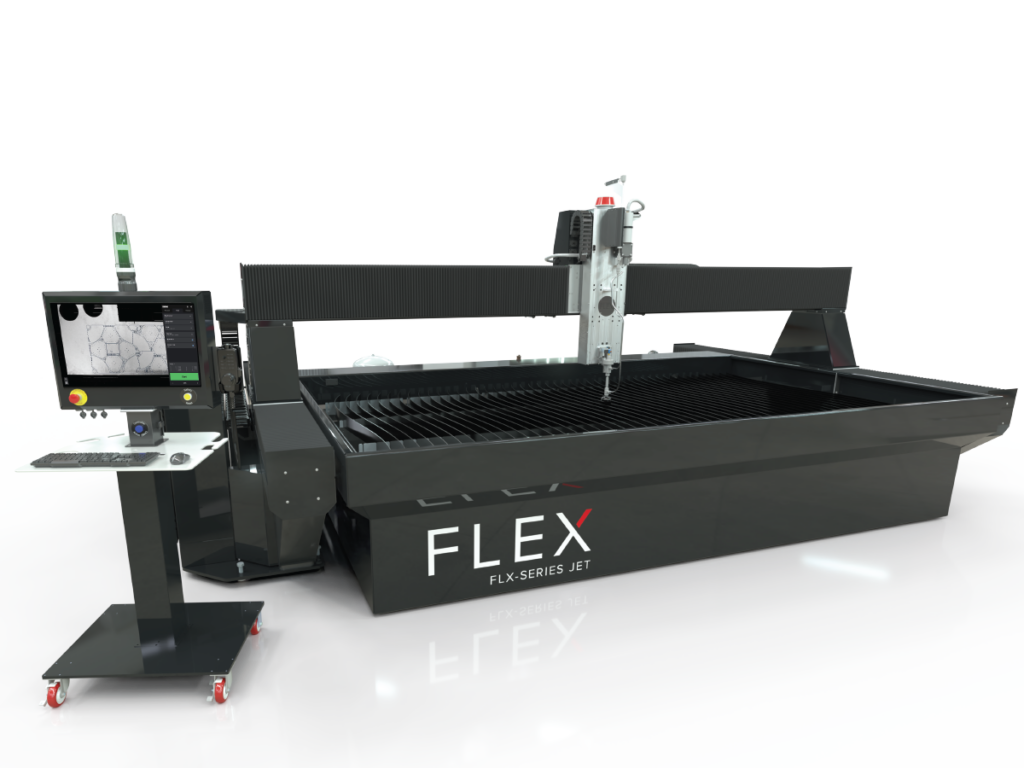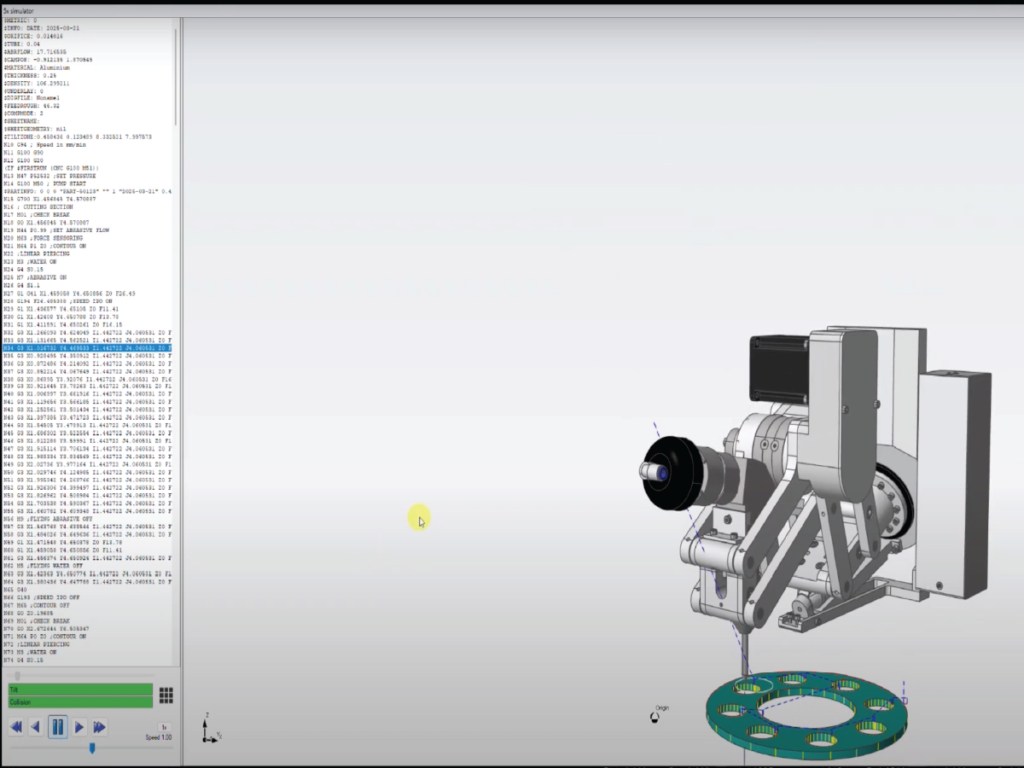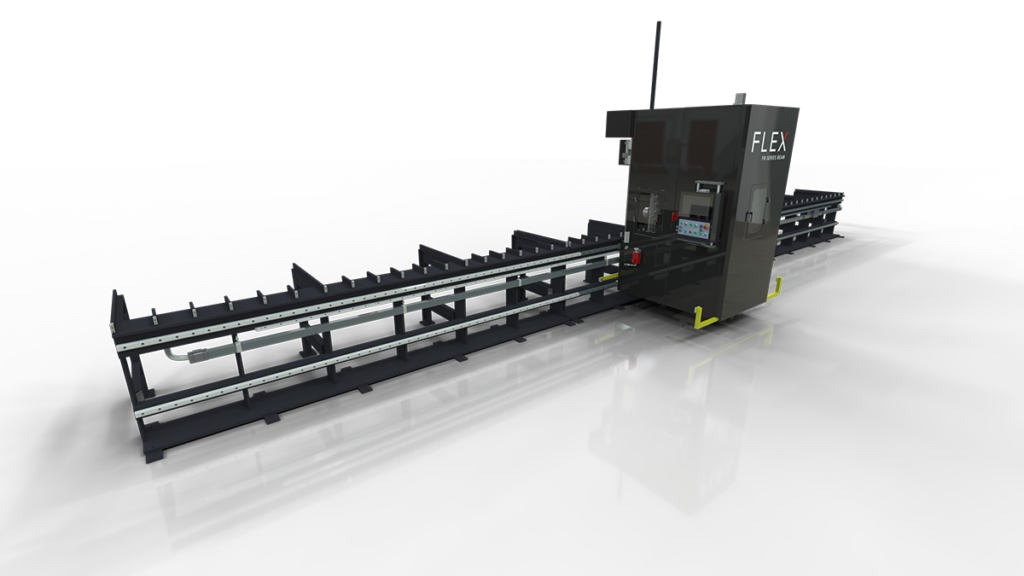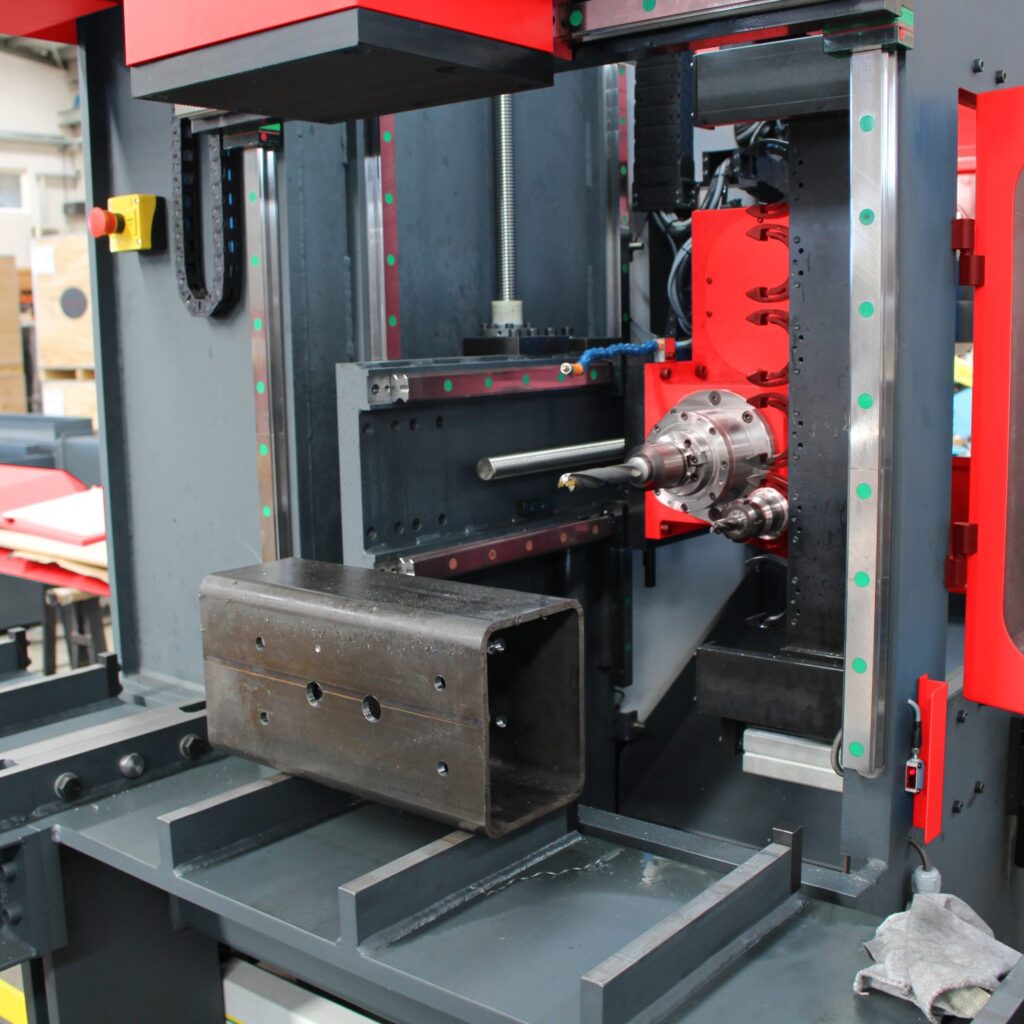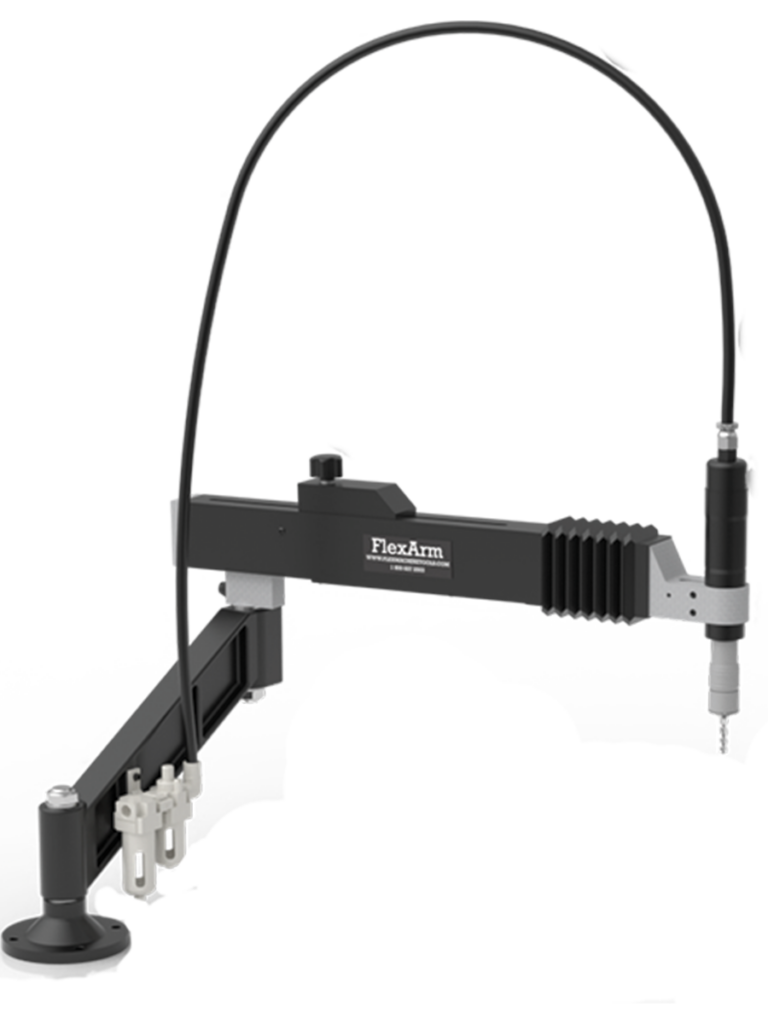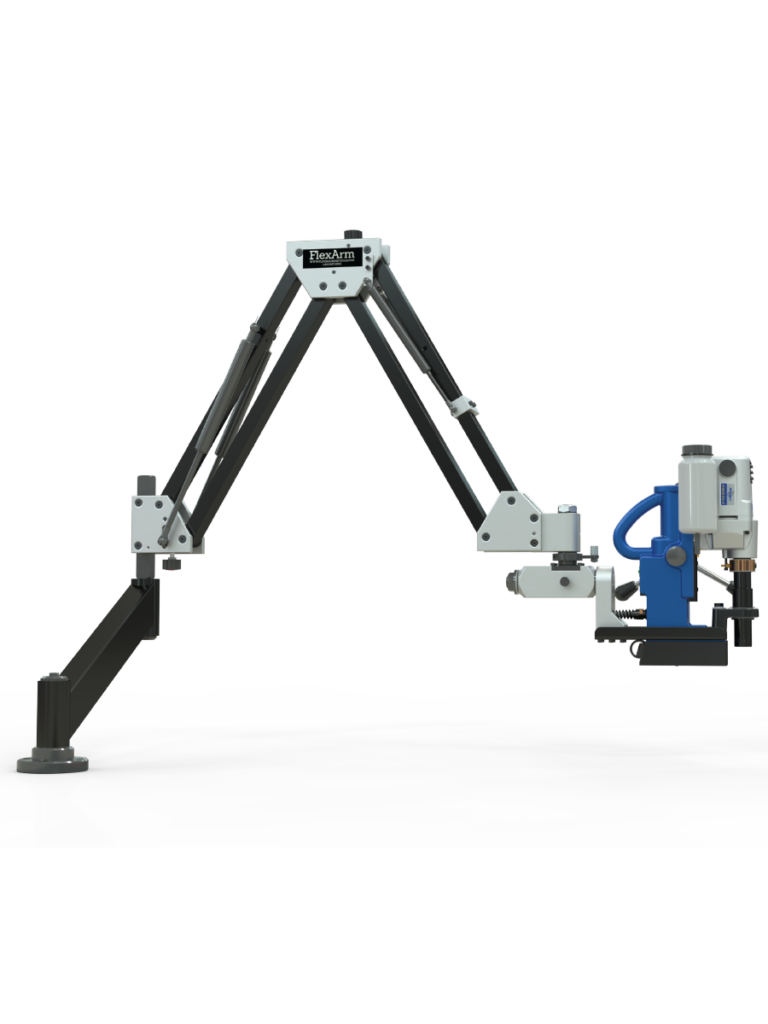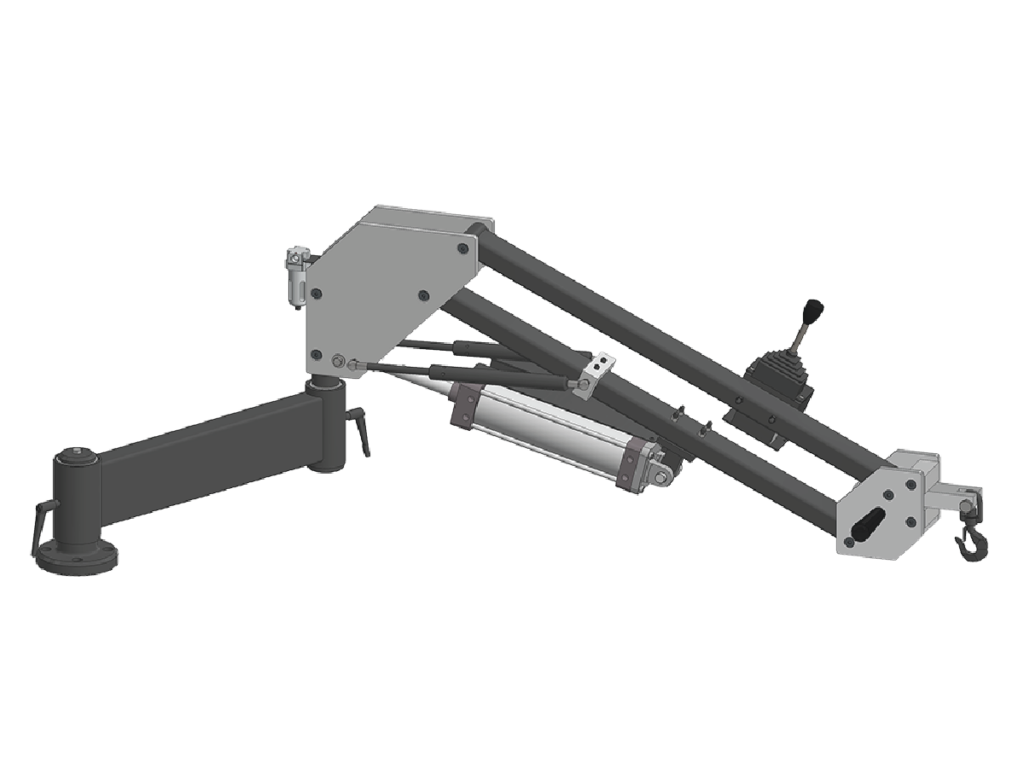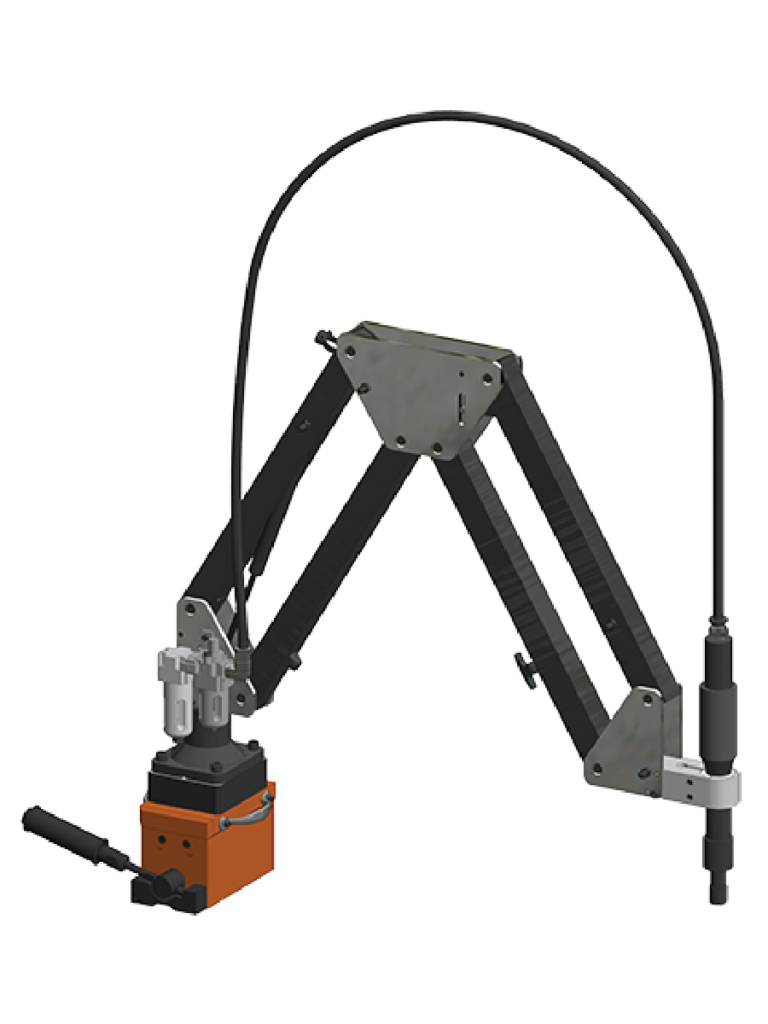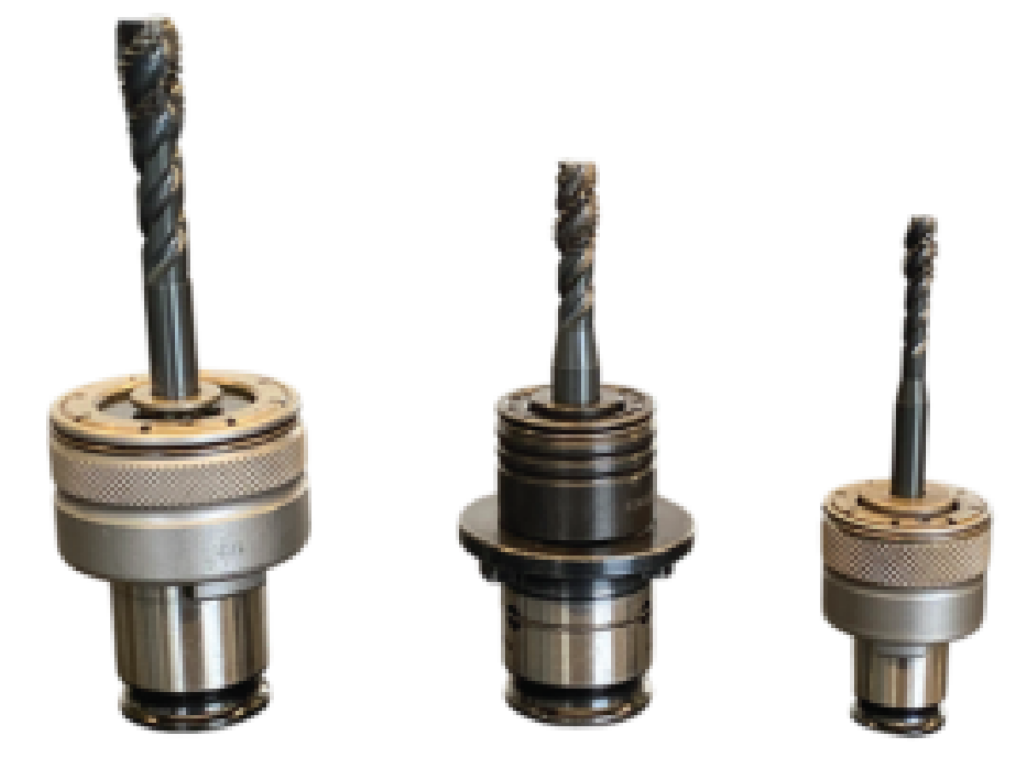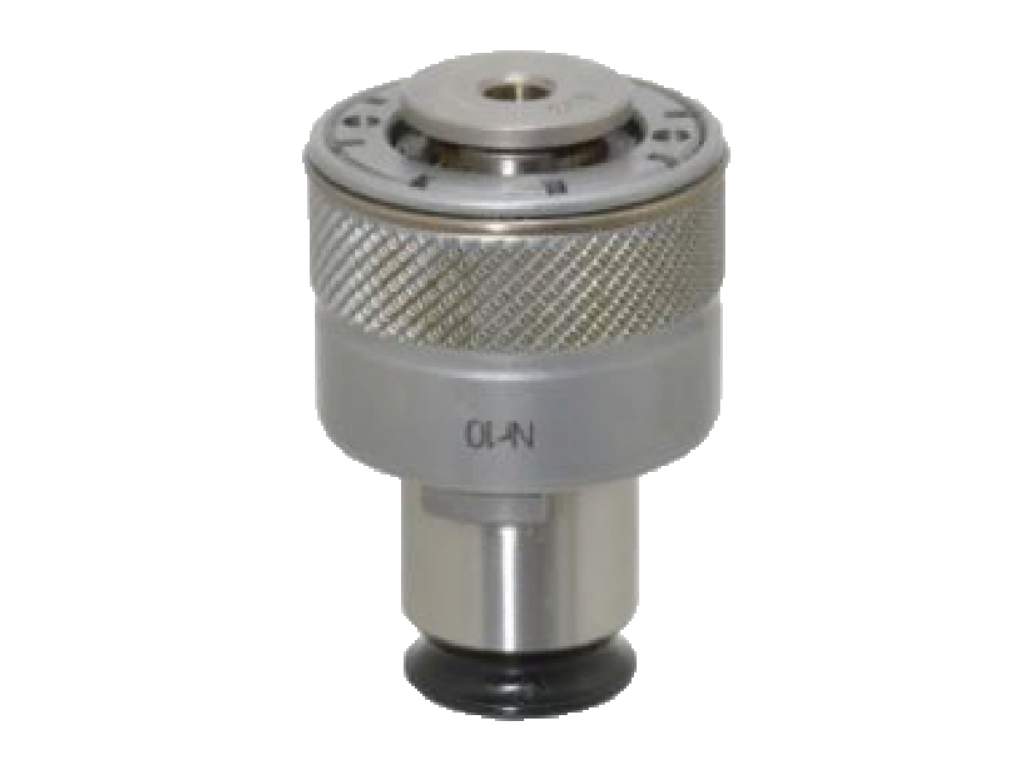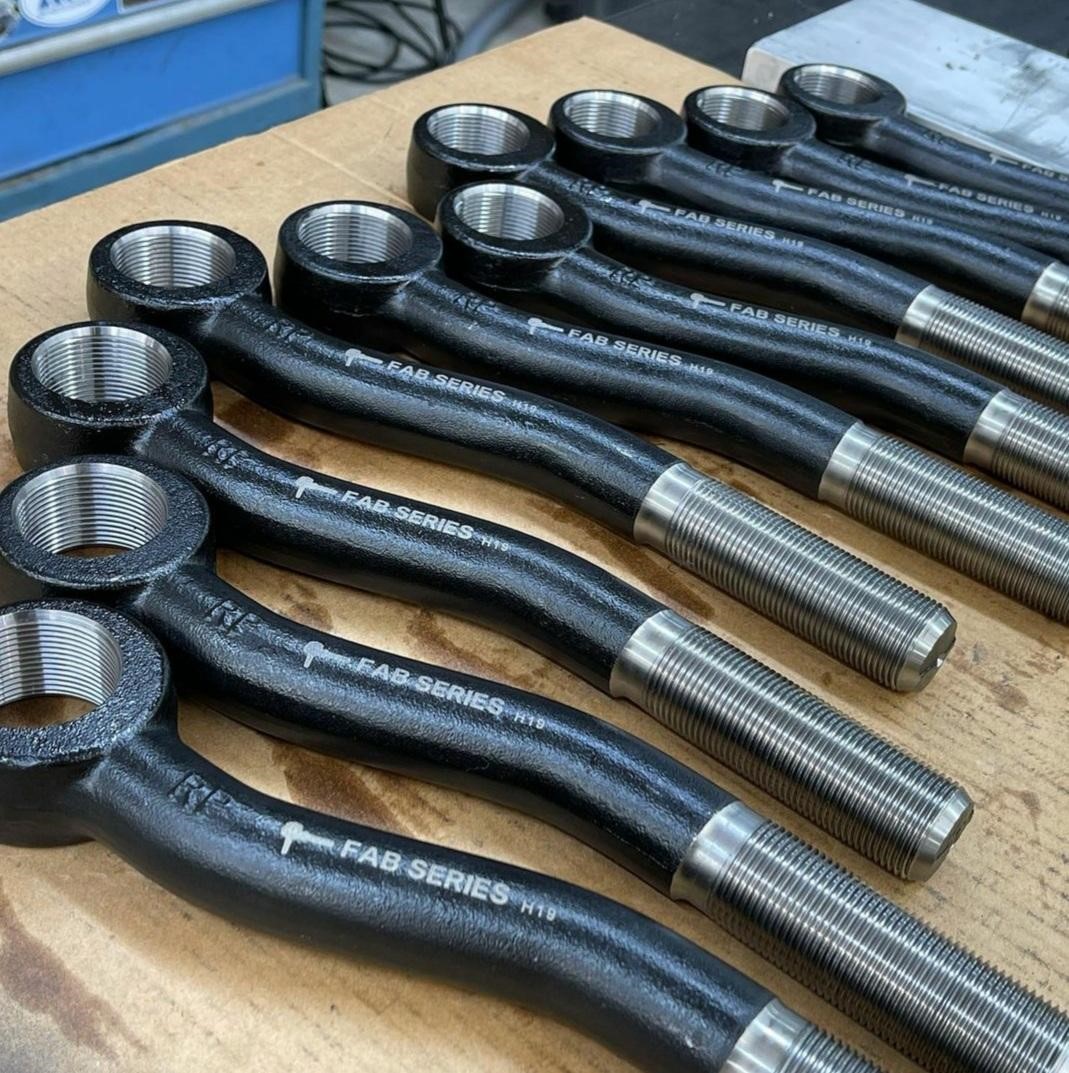When faced with production tapping, having the right tool for the job can save both time and money. Here is one situation where the FlexArm clearly outshines all other tapping methods.
Adam Booth, from the Abom79 YouTube channel and Booth Machine Shop, was contacted by a company looking to correct a batch of 180 tire rods. These tire rods became warped during the fabrication process resulting in threaded bushings that no longer screwed in.
The company was looking for a solution that was faster and more efficient than manually threading each hole. Adam was confident the FlexArm could handle it, so he had them send over parts to test using the GHM-60 FlexArm and a 1 ¾”-12 tap to chase the threads. (Watch the Test Here)
The test went as expected; the FlexArm was the perfect tool for the operation. Adam accepted the job, and with a few minor tweaks to fixturing, he created a setup that would maximize output and shorten the cycle time. After running the tap through each hole, he checked the parts for signs of cross-threading. Adam tapped all 180 tire rods in a fraction of the time it would take for other methods, and he did this without cross-threading a single hole. Check out his process below.
If you are having issues with production tapping, or just looking for a quick and easy tapping solution contact us today or give us a call at 1-800-837-2503.
All images and videos are owned by Abom79


